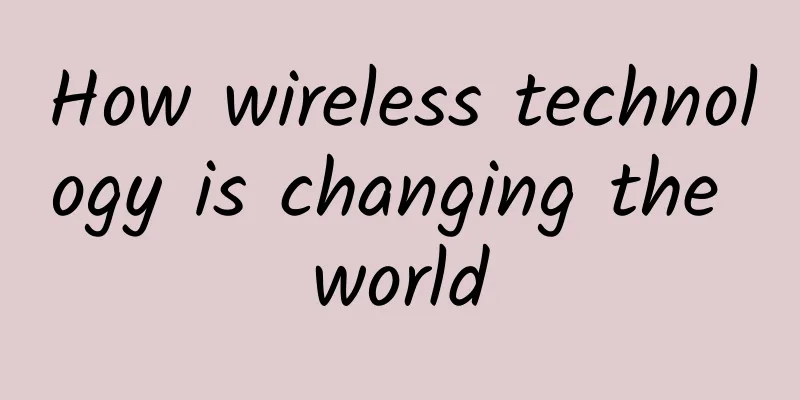How wireless technology is changing the world

How does wireless charging technology work?Before we read more about this technology, it is important for us to understand how exactly it works. So, in essence, wireless charging is mainly based on the principle of Inductive Power Transfer (IPT) or Magnetic Resonance (MR). This means that the energy from the charger is transferred into the device through a receiver placed at the back through electromagnetic induction. Using an induction coil, the charger generates an electromagnetic field and the coil on the receiver converts it back into power. To understand further, let's look at some wireless charging methods. Resonance Charging – This method is used to charge large batteries such as robots, vacuum cleaners, computers or electric cars, which are known to consume a lot of electricity. In resonance charging, the coils in the device and the power source are tuned to the same electromagnetic frequency. Inductive Charging – Inductive wireless chargers are used to charge medium-sized devices such as smartphones, tablets, kitchen appliances, and music players. In this charging method, the device is placed on a conductive or wireless charging pad and plugged into an electrical outlet. Wireless charging – This charging method is suitable for small battery devices and only consumes a low amount of power, including medical devices, smart watches, music players, wireless keyboards, wireless mice and some other devices. The receiver and transmitter in the device are configured to the same frequency, allowing the device to charge via radio waves. The Importance of Wireless Charging in the Business WorldIn just a few decades, the internet and cell phones have become wireless, and now, charging is slowly changing and becoming wireless as well. Although wireless charging technology is still in its infancy, it is expected to grow tremendously in the coming years. Currently, this technology is being used in a range of practical applications, including laptops, smartphones, wearable devices, and even electric vehicles. The purpose of adopting this technology in all these areas is to reduce the use of cables. The manufacturing, healthcare, and automotive industries are embracing wireless charging technology as it promises to improve mobility and enable Internet of Things (IoT) devices to be charged at a distance. More importantly, due to the convenience provided by the technology to users and ensuring safe charging in hazardous environments, the wireless charging market is expected to grow further, with revenues expected to exceed $30 billion by 2026. The need for thermal management in wireless chargingIt goes without saying that wireless charging has proven to be easier, faster, and more convenient, but people using this technology are facing a challenge – drastic temperature fluctuations. These fluctuations can lead to poor performance, which in turn results in a shorter battery life. Therefore, many manufacturers are looking at relying on thermal performance. Therefore, in the near future, there will be strong advancements that allow for greater power and less frequent charging. Manufacturers will put their main focus on achieving safety and optimal efficiency of the battery. Relying on methods such as phase change materials, air cooling, fin cooling, as well as liquid cooling will ensure that all this is achieved. Learn about wireless electric vehicle chargingFrankly speaking, the future of mobility, especially in urban areas, is electric, autonomous, connected, and wireless. With automakers, led by Tesla, continuing to bring electric and hybrid vehicles to the market, the automotive industry is now focusing on the next big thing – wireless EV charging. In fact, the development of wireless charging systems has clearly gained momentum in recent months. This major development is attributed to the convenience of wireless charging methods and the popularity of this method in recent years. Even the British government has shown interest, with the Secretary of State for Transport announcing plans to trial wireless charging technology on electric vehicles and investing £3.4 million in the project. This announcement alone is enough to change electric transportation in the United States. If all goes according to plan, taxis in all major cities will benefit greatly, as wireless charging can allow multiple taxis to charge at the same time, making it easier and more convenient for drivers to charge, which in turn will reduce clutter on the streets. Furthermore, as the UK government is committed to a clean environment, it is encouraging more and more citizens to switch from fuel vehicles to electric vehicles, which will go a long way in ensuring that emissions are reduced. This will, of course, lead to more people choosing electric vehicles, which will allow the new wireless charging technology to be publicly launched for public use. In the future, wireless charging is expected to be based on Dynamic Electric Vehicle Charging (DEVC), which will allow cars to be charged while driving. This will undoubtedly give a huge boost to travel, as drivers will not have to wait in line for their cars to charge. In addition, this DEVC technology can also reduce the weight of cars, as they will no longer need the large amount of energy storage they have today. Future trends in wireless technologyWireless charging is designed to expand the range and mobility of device users. Our previous technology only allowed you to charge your device a few centimeters away from the charging tool. Recently, this distance has increased a little bit, to just a few centimeters. If you follow this trend, coupled with the continuous advancement of technology, it will be possible to charge your device at a distance of several meters. Additionally, the commercial sector continues to see new and innovative wireless charging applications. Dining room tables that can charge smartphones and other devices, office furniture with integrated charging capabilities, not to mention kitchen counters that can charge coffee machines, are just some of the applications you can expect to see launched in the near future. |
<<: Network security programming: C language reverse loop structure analysis
>>: Network security attack and defense: wireless network security WEP
Recommend
Rather than calling it a skill, it is better to call it a history of blood and tears. Do you really know how to choose a router?
Whenever I am praised for my shopping skills, I c...
Color light shines! The results of the application case collection activity of "Technical Specifications for the Construction of Ethernet All-Optical Networks in Smart Parks" are announced
Recently, the Green Construction and Intelligent ...
Saving 5G, starting with removing the pull-down 5G switch?
Recently, many users have found that the 5G signa...
BandwagonHost: Los Angeles DC9 limited CN2 GIA line annual payment of 74 US dollars, 2.5-10Gbps bandwidth CN2 GIA quarterly payment starts at 46.7 US dollars
Recently, Bwh81 has added a limited edition speci...
Riverbed Digital Experience Management
Today, most businesses realize that in order to a...
BuyVM adds new unlocked streaming VPS hosts, 1Gbps unlimited traffic from $5/month
BuyVM has launched the China Special - STREAM RYZ...
There are so many IoT protocols: Which one is right for you among LoRa, Cat-M and NB-IoT?
It’s been nearly 30 years since the first unoffic...
2.4G or 5G? Do you know the difference between Wi-Fi frequency bands?
Overview The 2.4G and 5G mentioned in the title r...
Two ways to decrypt HTTPS traffic with Wireshark
principle Let's review the entire handshake p...
What network engineers should know about ARP
Dynamic ARP entry learning In most cases, devices...
5G is coming, which of the three major CDN forces will take the initiative in the future market
Judging from the scene of MWC2018, 5G has become ...
Ruizhi Big Data: Injecting Intelligent Genes into Dual-State IT
In the summer of 2019, a set of data about China&...
VirMach: $7.2/year KVM-512MB/10GB/1TB/multiple data centers available
VirMach has launched the SUMMER HOSTSALE promotio...
Three steps to converge cloud and edge computing for IoT
The Internet of Things has grown rapidly over the...
The 5G news of the three major operators finally landed
Recently, with China Unicom announcing the launch...









